
This parent guide supports parents in helping their child at home with the 6th grade Science content.
- Subject:
- Science
- Material Type:
- Reference Material
- Vocabulary
- Author:
- Kelly Rawlston
- Letoria Lewis
- Date Added:
- 10/11/2022

This parent guide supports parents in helping their child at home with the 6th grade Science content.

This resource accompanies our Rethink 6th Grade Science course. It includes ideas for use, ways to support exceptional children, ways to extend learning, digital resources and tools, tips for supporting English Language Learners and students with visual and hearing impairments. There are also ideas for offline learning.
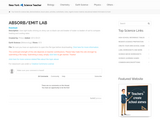
Students use light bulbs shining on a shiny can vs a black can and a beaker of water vs a beaker of soil to compare heating and cooling rates.

The activites in this lesson will help students better understand heat energy, conduction, convection, and radiation.

Students will create a solar oven from a pizza box. They will learn that the sun is hot enough to bake food through warming up the ingredients for smores.

In this STEM lesson, students will participate in an engineering design challenge to design and build a solar box cooker, and test it out to see if it works well enough to make S'mores.
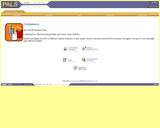
Assesses students' abilities to make and record measurements of temperature and probes their understanding of the concept of insulation. Hot water is poured into three containers (metal, ceramic, and plastic) and temperature is taken and recorded over a 10-minute interval to investigate the effect of different container materials on heat transfer and insulating capacity.

In this lesson, students will explore convection using classroom experiments on Earth and then compare the results with the results of the same experiment in the microgravity environment onbaord the International Space Station.

In this STEM activity, students are enabled to demonstrate, test, and analyze materials utilized in spacesuits to keep astronauts cool in the harsh environment of space. They will demonstrate the water cooling technology used in the International Space Station (ISS) Extravehicular Mobility Unit (EMU). Students will also test and make an analysis of the relationship between reflection/absorption and color.

In this STEM activity, students are provided with a variety of materials to build a hot air balloon. Teams of students will use their knowledge of density and heat transfer to design, construct, and test their balloon. The activity concludes with flight testing the balloons and then a review of the design features of all balloons for the most advantageous design features.
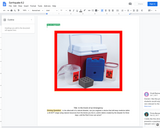
An engineering and design lesson for middle school (our 7th grade standards).
In the aftermath of a natural disaster, can you engineer a device that will keep medicine within a 40-60°F range using natural resources from the biome you live in, and/or debris created by the disaster for three days, until the Red Cross can arrive?
You are a team of relief workers in __________________after a major earthquake/tsunami has occurred. Your team lead as just told you about a young women with diabetes has been injured and needs insulin to be delivered __________ miles away (no open roads). Your team will need to research, design, and build a portable device to keep the insulin between _____ and ______ °(F/C) for _____ days. Once you return you will present the effectiveness of your device to your lead and a team other relief workers showing your both your design/device and explaining the process.
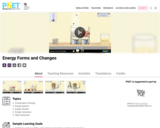
Sample Learning Goals
Predict how energy will flow when objects are heated or cooled, or for objects in contact that have different temperatures.
Describe the different types of energy and give examples from everyday life.
Describe how energy can change from one form of energy into another.
Explain conservation of energy in real-life systems.
Design a system with energy sources, changers, and users and describe how energy flows and changes one form of energy into another.
Tell the energy story for real-life systems.

Students design and build a solar water heater and see how big a temperature change they can get.

In this activity, students will model the movement of molecules as heat energy moves.
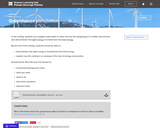
Students use a plastic soda bottle to make and test the temperature of a bottle "greenhouse" and demonstrate how light energy is transformed into heat energy.
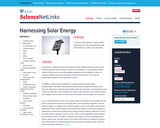
Students discover the properties of light (radiant) energy from the sun by experimenting with soalr collectors, cookers, and calculators.

In this lesson, students investigate and learn the difference between conduction, convection, and radiation. Teacher demonstrations are used to initiate small group discussions. As assessment, students will create a tri-fold informational brochure to demonstrate their conceptual understanding.

With this resource, students will compare materials by determining which are best able to conduct heat and those which insulate and prevent heat energy transfer.

This resource will allow students to understand that convection is the movement of particles in currents as hot material rises and cool material sinks.

This resource is a video that accompanies the lesson plan, "Heat, Temperature and Conduction."